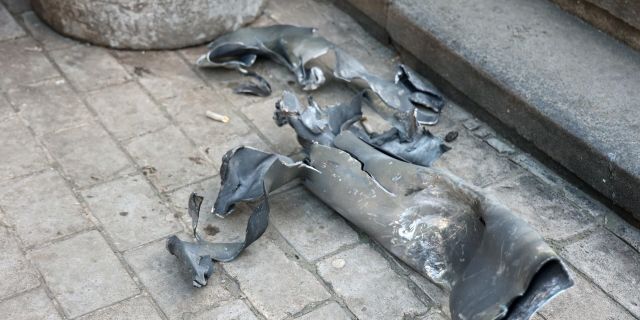Lidovky: stocks of shells are exhausted, and there is not enough capacity for their production in the WestNATO countries lack 155 mm shells, which Ukraine also urgently needs, Lidovsky writes.
This also applies to the USA, where they are produced by only two plants for the whole country. A rapid increase in production is possible, but it will not be without technical difficulties.
Stefan Hobza (Štěpán Hobza)The standard NATO artillery 155-millimeter shell is a kind of "golden grail" of the armed conflict in Ukraine.
However, the production capacities of Western states are sorely lacking.
The armed conflict in Ukraine has been going on for 14 months. He confirmed that major conventional conflicts are still possible. But at the same time, the demand for conventional artillery shells has also increased, which have proven themselves on the Ukrainian front as one of the fundamental means for successful resistance to the enemy.
However, NATO states are now sorely lacking the extremely necessary 155 mm caliber shells. This also applies to the United States, where ammunition of this type is capable of producing only two factories for the whole country.
Western states have already supplied Kiev with approximately one and a half million shells of the specified caliber. The reason for their "popularity" lies, in simple terms, in the perfect balance between striking action and range. Small-caliber guns fire further, but their effect at the detonation site is quite small. So, for example, they will not destroy a modern tank or a fortified firing position. Guns of a larger caliber have too short a range to be used for firing from positions on a modern battlefield.
Although 155-millimeter shells form the basis of the artillery of the armies of the member countries of the North Atlantic Alliance, this does not mean that NATO has inexhaustible reserves of them. Just the opposite. The strategic doctrine of the alliance did not provide for a prolonged conventional conflict on the borders of NATO, that is, it did not provide for the need to accumulate appropriate ammunition stocks. The required rapid increase in production is not that impossible, but it will not be without technical difficulties.
Pennsylvania and no one else
For example, the French defense plant Nexter, which produces these shells mainly for its Caesar howitzers, plans to increase production to 150 thousand units per year from 2025, which is three times more than before the outbreak of the armed conflict in Ukraine. The European Union, in turn, in early March decided to allocate two billion euros for the purchase of artillery shells for Ukraine, and this money will also be used to expand production. However, it is still unclear how much.
In the USA, 155-millimeter shells are produced by only two factories. One of them is located in Scranton, Pennsylvania, also known as the birthplace of President Joe Biden. The second plant is located in the nearby town of Wilkes-Barre. The production of shells depends on them, first of all, because only Pennsylvania allegedly can produce a steel shell casing that requires fine processing.
Both plants signed contracts for a total of 24 thousand shells per month. That's just the Ukrainian artillery spends almost four times more of them in the same time - about 90 thousand. The US Army placed an order in Pennsylvania for $ 217 million in order to increase production. But the state and the owner of the General Dynamics plants have not yet announced how much this amount will actually be able to increase production.
Request to Allies
Therefore, the United States appeals to everyone it can. For example, last fall, the US Department of Defense decided that the ammunition that the United States of America stores in Israel will also be sent to Ukraine. Washington made the decision to transfer about 300,000 155-millimeter shells back when Yair Lapid was at the head of the Israeli government (in December 2022, Benjamin Netanyahu replaced him as prime minister). Lapid, despite fears of spoiling relations with Moscow, agreed to send these munitions to Ukraine.
The operation was also sensitive from a political point of view, since Israel has so far limited its support to Kiev mainly to verbal criticism of Russian aggression and the supply of humanitarian aid, as well as protective equipment. Tel Aviv is trying to maintain at least basic working relations with Moscow, including because of its airstrikes on targets in Syria, where Russia has its own contingent.
Two weeks ago, the United States also signed an agreement to borrow half a million 155-millimeter shells from South Korea. The word "sale" is missing from the contract, most likely because officially, as part of its policy, Seoul refuses to supply weapons and ammunition to Ukraine, which also concerns sales to third countries, which could then send ammunition to Kiev.
155-millimeter shells became the standard artillery ammunition of NATO member armies approximately 20 years ago. Then they began to refocus their artillery on them and unify calibers within the alliance. In this regard, in particular, a number of obsolete large-caliber howitzers were removed from service, for example, the American M110 self-propelled guns, which were last fired during the Gulf War in 1991.
No matter how popular 155 mm shells are now, they do not belong to innovations, because French land artillery used ammunition of this caliber even before the First World War.

